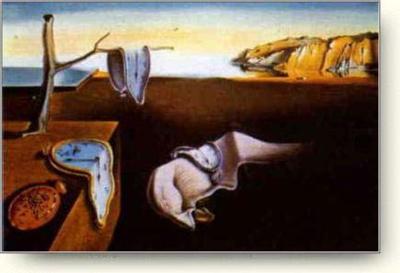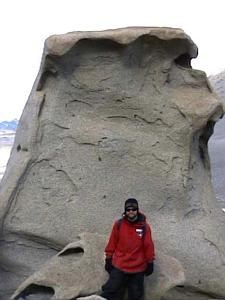2 February, 2001
Our helo pilot is Cady Johnson. It seems fitting to be able to share my
last time out in the field with my new friend. Cady is one of those people
who is quick with a hand shake and smile. When I first met Cady, during
snow school, his eyes seemed to sparkle with energy under the Patagonia tuk
(for my canadian audience, eh) covering his blonde hair. Cady and I hit it
off instantly.
Today we are off to Bull Pass, located in Wright Valley, to collect soil
samples. Bull Pass is one of the windiest places on Earth. Recorded wind
speeds of 200+ mph have blasted the pass for 4 straight days. The top wind
speed of this place is still unknown since the instrument used to measure
the speed is only calibrated to 200 mph. Soils carried by these powerful
winds sandblast the rocks and boulders into individually carved objects
that scientists call ventifacts. Scientists have a fondness for naming
everything, this is why I won't play Scrabble with them.
I once read that a sculptor does not approach stone and chip away with
chisel and hammer until what is left is the intended design, instead a
sculptor releases what is already inside the rock. The same thing could be
said about the sand blasting effect the winds have on the objects in this
valley. The result being all of the rocks and boulders of Bull Pass have
their own design and shape released by mother nature.
If, when this valley was forming, you left this valley for an artists to
use as their canvas, this place would be the canvas of Salvador Felipe
Jacinto Dalii Domenech. Better known to the world as Salvador Dali. Dali's
art is of a man who could realize and implement deep-dream imagery on
canvas. Persistence of Memory (1931) is still one of his best known
surrealist works. Like all art, the objects and judgment need to be left
up to the viewer. You decide if the name of this valley should be changed.


Persistence of Memory (1931) by Salvador Dali.



Contact the TEA in the field at
.
If you cannot connect through your browser, copy the
TEA's e-mail address in the "To:" line of
your favorite e-mail package.
|
